Best bike racks for cars: Tow hitch, roof mount and trunk mount options to carry your bike by car
The best bike racks for cars will keep your bike safe and secure on your travels
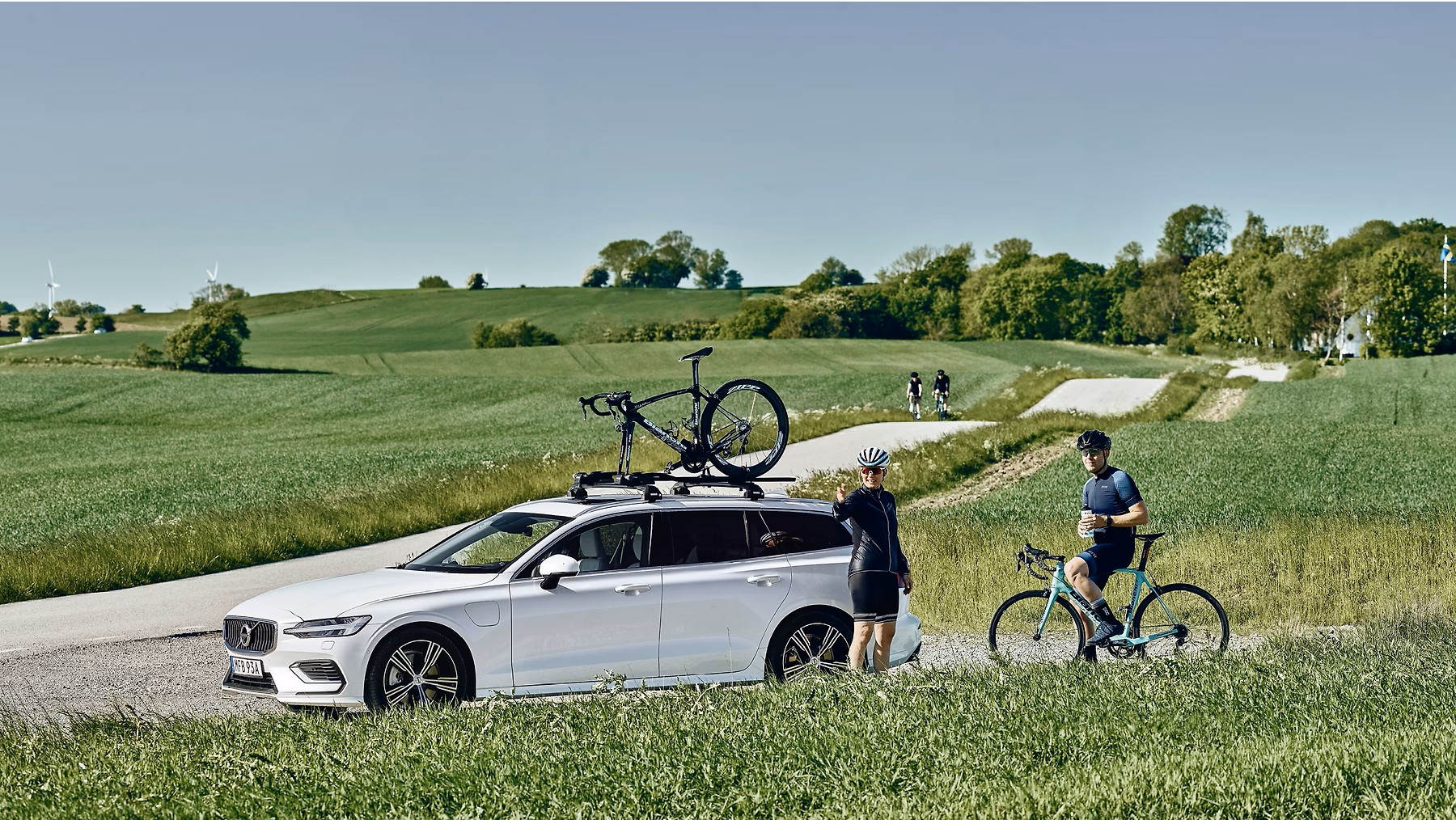
Roof mounting means that your bike doesn't impinge on passenger and load-carrying space or your rear view. It won't obscure your licence plate either.
Using a rooftop bike carrier can be an issue for those who drive SUVs, as it may be difficult to lift a bike off and on. There's also the risk of hitting a low structure with your bike - you need to be wary of multistorey car parks and car parks with height barriers.
But for drivers of smaller vehicles, keeping your bike out of the way as you travel still has its advantages. European estate cars (station wagons) often come with roof rails, so adding roof bars and a roof bike rack may be a convenient option. Once you've bought your roof bars, they'll be additionally useful if you get into other sports, as you can simply buy add-on mounts for different items, or want extra load space from a top box.
If you are unsure whether a roof rack will suit your needs, the best bike racks for cars cover all three mounting methods. The best roof bike racks sit alongside trunk (boot) mounting and tow hitch mounting as the methods available to carry your bike securely on your car's outside.
If you are looking for the best roof bike rack, then keep reading to see our suggestions, or head to the bottom for a quick guide on how to choose the right one for you.
Best roof bike racks for cars: quick list
Last updated on 07th of July 2025
Products were checked to ensure they are still up to date and available, the SeaSucker Talon was added as an option for people who don't have roof rails. Pros and Cons were added for all the products to explain strengths and weaknesses of the products in the guide.
Best roof bike racks for cars available today
Best for ease of use



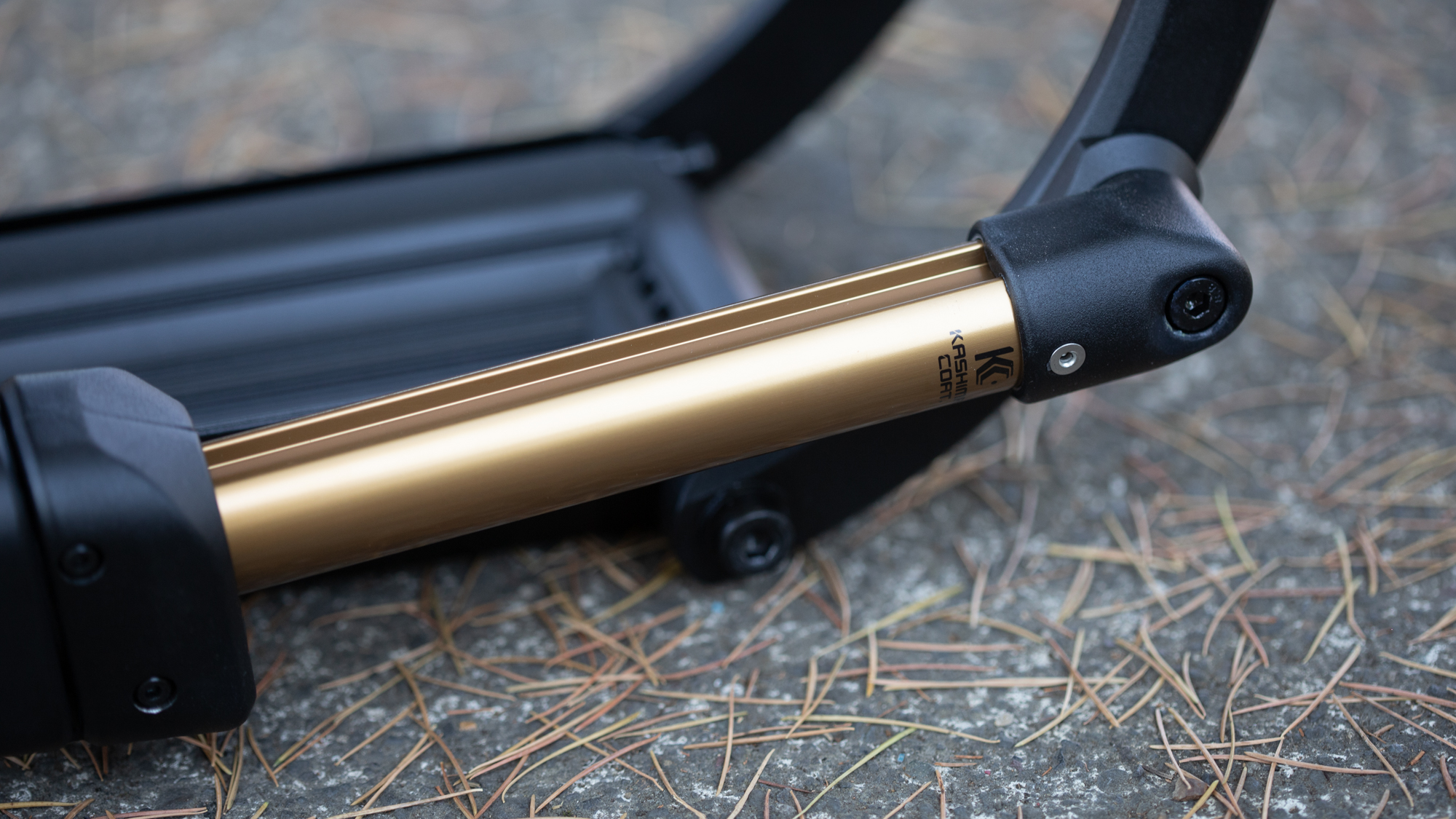

1. Kuat Piston SR
Specifications
Reasons to buy
Reasons to avoid
✅ You want easy loading: The OneTap system with Kashima-coated pistons makes loading and unloading your bike quick and hassle-free.
✅ You want beautiful design: The Kuat Piston SR stands out with premium aesthetics and a reputation for high-end craftsmanship.
❌ You don’t want to spend a lot: It costs roughly double compared to other roof rack options.
❌ You don’t want heavy gear: Its weight makes it less ideal if you plan to frequently install and remove the rack.
Does it make sense to describe a rooftop bike rack as beautiful? If so, then it's certainly going to come from Kuat. They are a brand with a reputation for making high-end racks and the Piston SR is yet another one.
To secure the bike to the rack, a pair of arms comes from either side and squeezes against the tyres. Kuat didn't invent this style but when it brought it to market with its Piston Pro X hitch-mounted rack, it brought its own spin on it. Instead of manual operation, there's an integrated Kashima coated Piston that operates with a OneTap system, in which unloading your bike is as easy as hitting the button and giving the arms time to open before removing your fully assembled bike.
This Piston SR rack takes the same function and moves it from the hitch to the roof. If you have fenders, you can still make use of the Piston SR with the purchase of the Fender Kit accessory. The downside to the whole system is that it's expensive, so expect to pay about double the price of other options for the ease of use. You might also want to choose something else if your plan is to add and remove the rack regularly, as it's heavier too.
Best for bikes with fenders
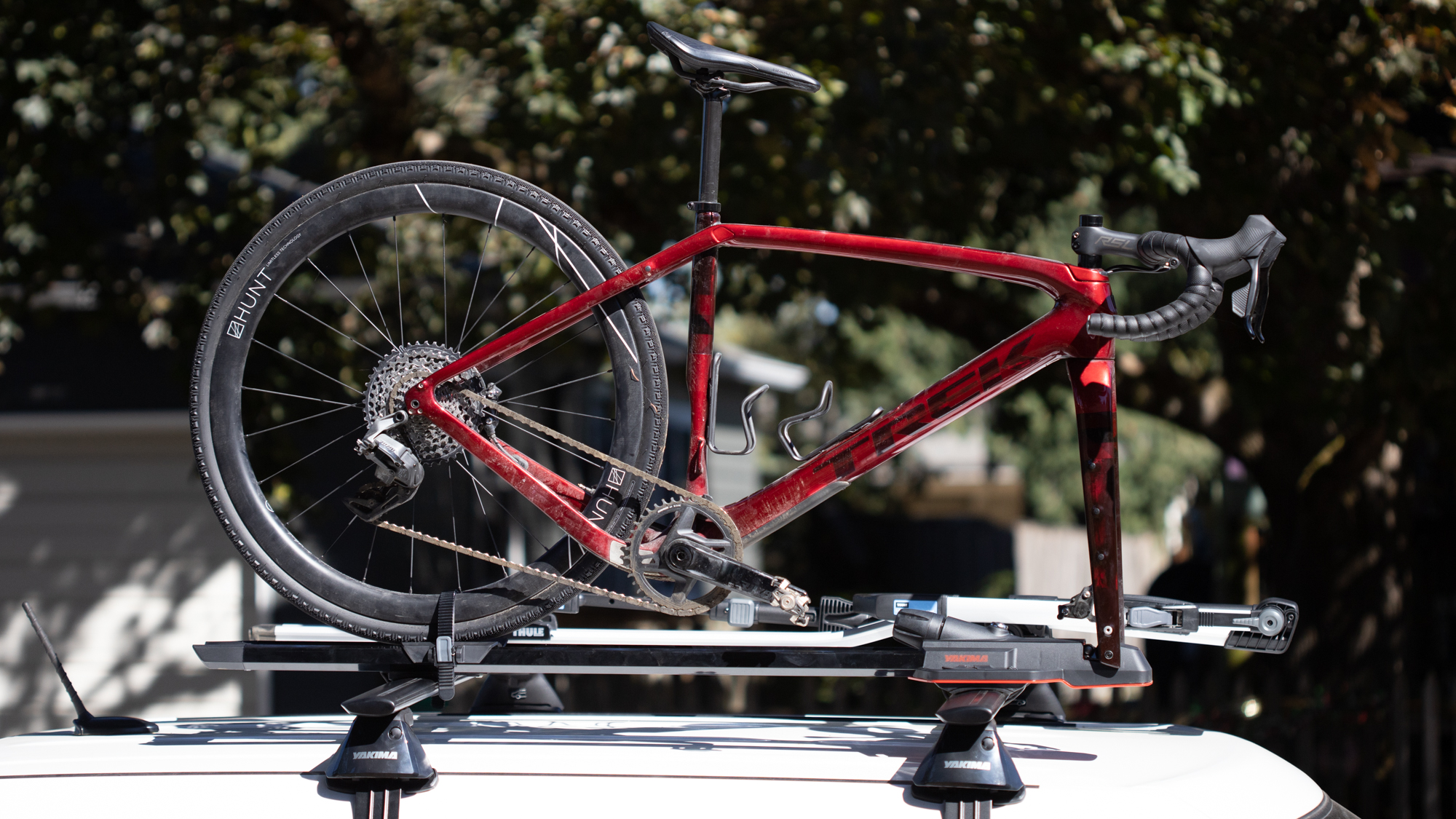





2. Yakima HighSpeed
Specifications
Reasons to buy
Reasons to avoid
✅ You want easy mounting and removal: Yakima racks, especially the HighRoad, are among the easiest to unmount regularly—ideal for users who don’t want a permanent setup.
✅ You want a rack that is compatible with mudguards or fenders: The fork-mounted HighSpeed model is a smart choice for bikes with fenders, solving a common issue with many rooftop racks.
❌ You don’t want to remove your front wheel: The HighSpeed requires front wheel removal, which adds time and hassle.
❌ You have a non-standard thru-axle: Some axle systems (e.g. Mavic) may require extra purchases or adapters, making setup more complicated than it should be.
Yakima is one of two options for adding crossbars to your car's roof. The brand will walk you through getting what you need for your car and make it ready to accept a rack. From there it has a wide range of products and multiple options that could just as easily be on this list of the best rooftop bike racks.
If you are purchasing Yakima base bar pieces then the HighRoad is a great wheel-on option and if you plan to unmount your rack regularly, Yakima is by far the easiest. There is one specific challenge that racks of all kinds experience though, and that is fenders/mudguards. If you ride in rainy climates then you know that fenders are a necessity, but it can be hard to find a rack solution. Kuat has an accessory to make the Piston SR work but it feels a little bit like a band-aid. If you transport a bike with fenders often, then something different might be the best choice. Like myself, Yakima calls the Pacific Northwest home, and much like our British friends across the pond, anyone from around here knows what it means to ride in the rain. When Yakima's employees need a solution for transporting a bike with fenders, they turn to the HighSpeed.
The Yakima HighSpeed is a fork-mounted rooftop bike rack. That means you'll need to remove the front wheel. With the wheel removed, there is a clamp that grabs the front axle and tightens down until it clicks. It works with thru-axles and there's an adapter for quick-release bikes that essentially turns the quick release into a thru-axle. One detail about that is you will need a thru-axle with a consistent width from side to side that easily stays with the frame. Some systems, such as those from Mavic might have you buying an extra thru-axle. With that sorted, the rear wheel stays on and there's a strap that holds it tight to the rack. That strap could use a bit of extra padding for fancy carbon wheels but it keeps things secure and while removing the front wheel is extra work, it keeps the bike lower when installed and means fenders aren't an issue.
Best rear wheel protection

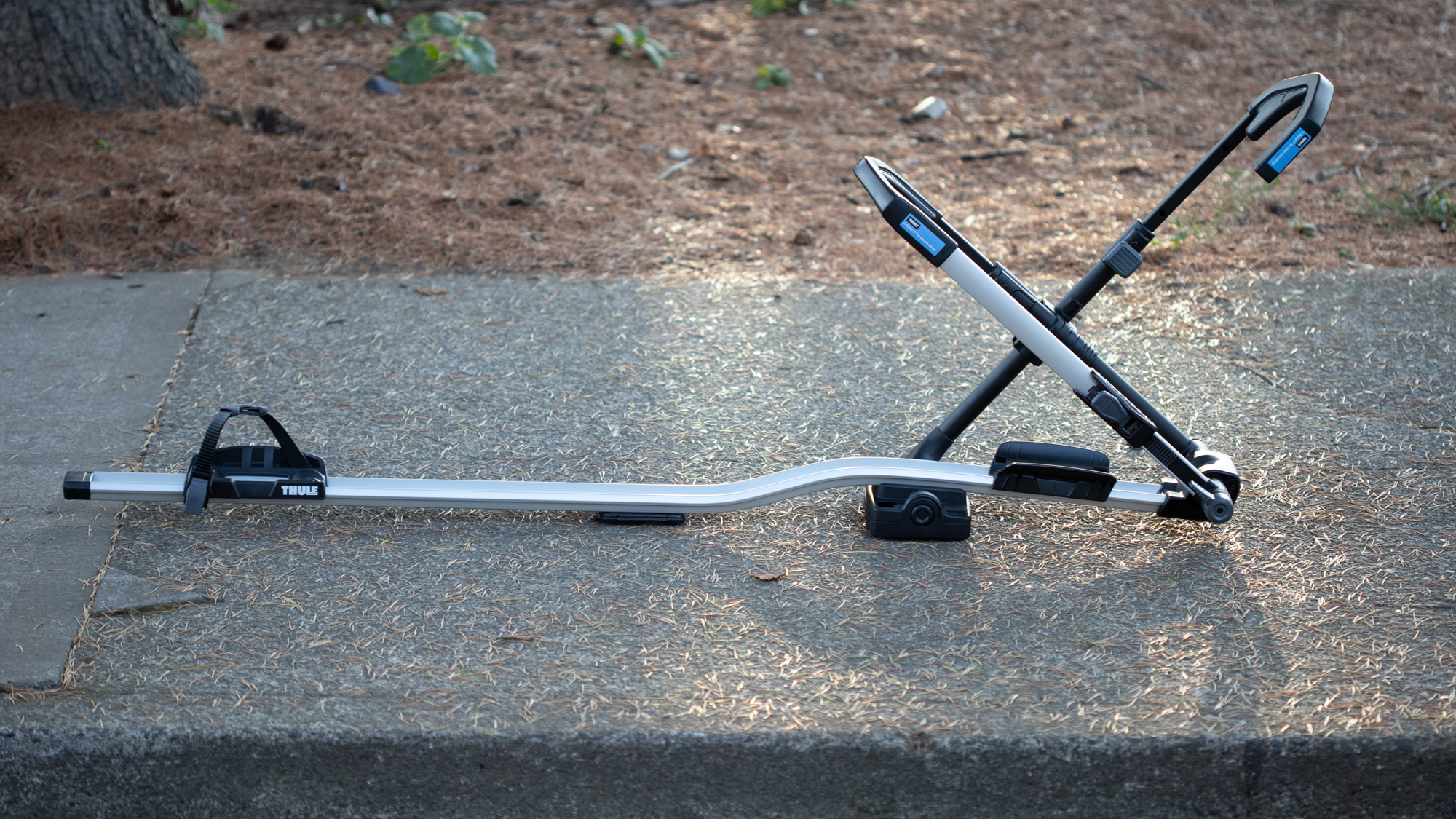



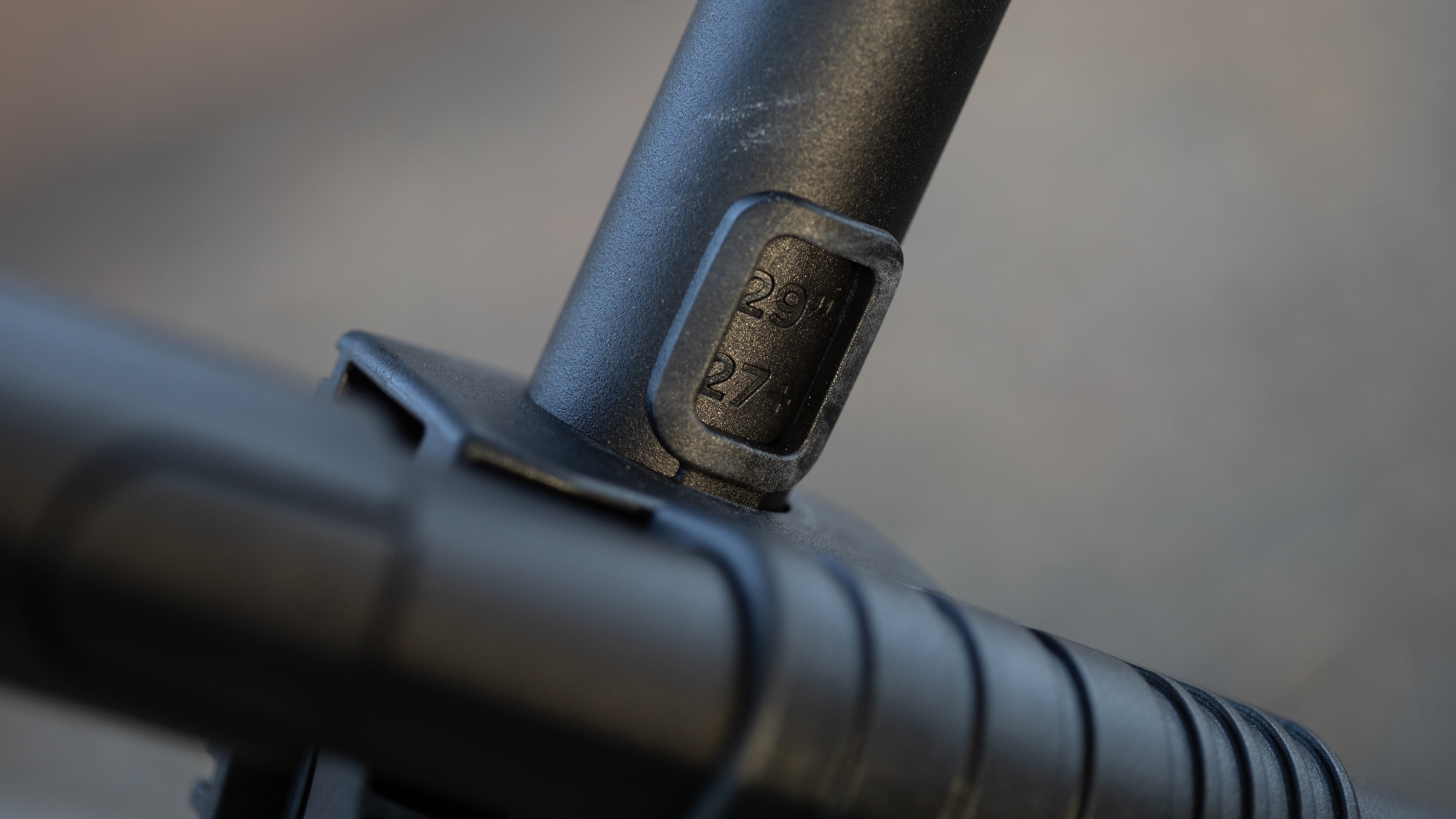
3. Thule Upride
Specifications
Reasons to buy
Reasons to avoid
✅ You want extra protection for your wheels: Thule includes a rubber cover on the rear wheel strap, which helps prevent damage to carbon wheels over time.
✅ You want easier bike loading: Thule’s adjustable rear hoop design makes it simpler to load your bike without needing to roll it back.
❌ You want security features: The rack lacks a locking mechanism for the hoops when the bike isn't mounted, which can make handling and moving the rack less convenient.
Thule is the other brand that makes all the base pieces you need to transform your car from the factory state to being ready to accept a rack. Just like Yakima, Thule has a ton of choices for what the horizontal bars look like and how they mount to the car. Whatever you need, they probably have a solution and once installed, you are free to mount the rack of your choice.
In terms of the racks themselves, the wheel-on rooftop racks from Thule and Yakima are incredibly close. So close that one of the biggest challenges is deciding between the HighRoad from Yakima and the UpRide from Thule. Having spent time with both, there are two small details that I like about the Thule that get them the nod.
The main feature we called out above is extra protection for the rear wheel. It's such a small detail that it might not matter to a lot of people but Thule includes a rubber cover for the rear wheel strap. Although it is unlikely to be an issue, I have some concerns that the movement of a plastic strap against a nice pair of carbon wheels could cause damage given enough time. Adding some rubber means you can tighten that strap down and never worry about picking up a scratch because of it.
Another small detail is the extra ease of putting the bike on the rack. Yakima uses solid hoops for the front wheel and the rear hoop needs the bike rolled back slightly to raise it up. The system that Thule uses means the rear hoop can change size as it gets tighter or looser. There's no need to roll the bike back for it to clear. Our only request would be that the hoops also have a lock to keep them in place without a bike for ease of moving the rack.
Best for range of bikes



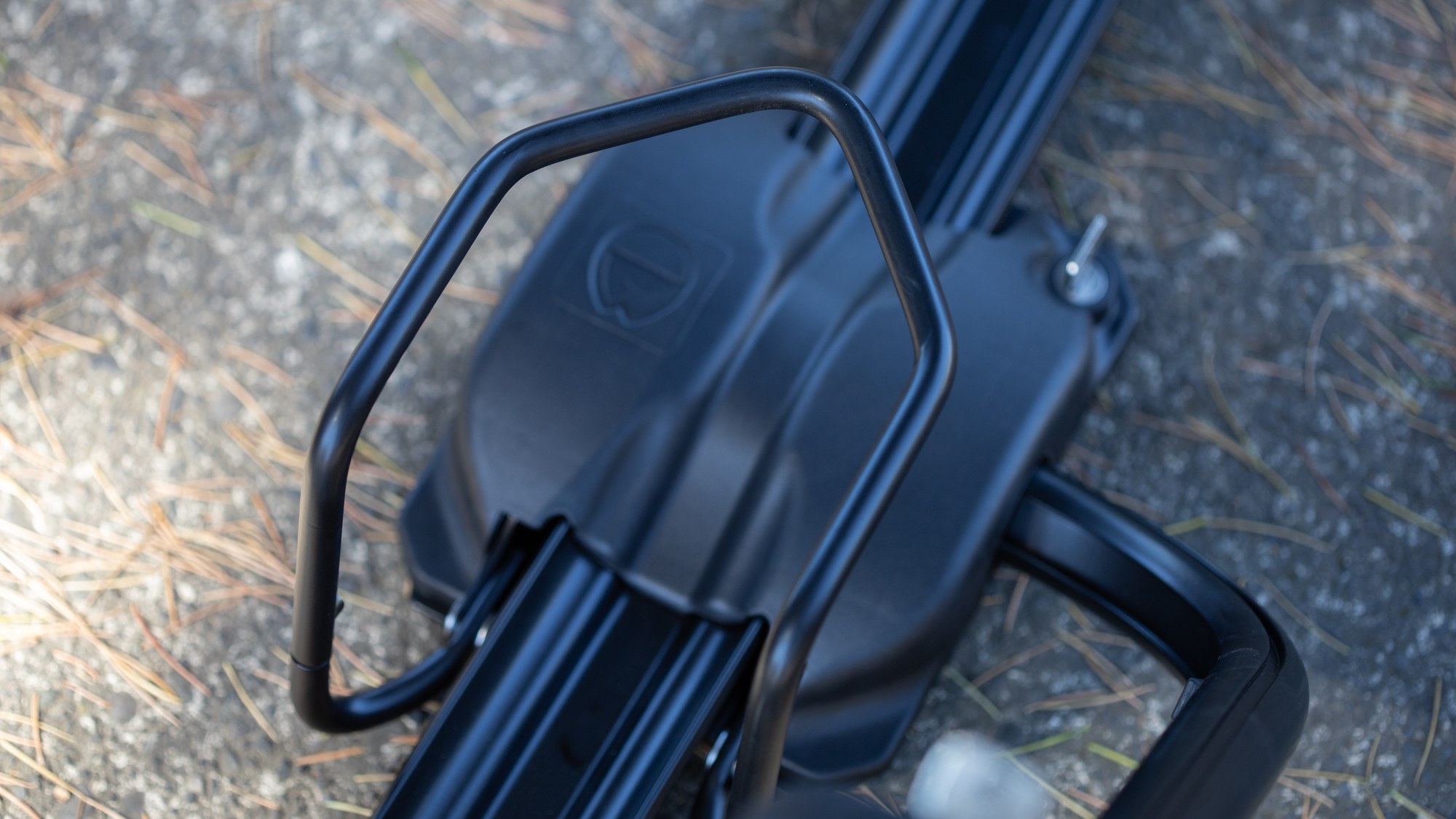


4. Rockymounts Tomahawk
Specifications
Reasons to buy
Reasons to avoid
✅ You want simplicity: The Rockymounts TomaHawk is straightforward to use, as the front arm requires no extra adjustments when switching between different wheel sizes.
❌ You're worried about paint damage: The retention system contacts the front fork directly, which might cause scratching, especially if the bike is dirty.
What's great about the Rockymounts TomaHawk is that it's simple. Instead of a system with two hoops for the front wheel, the TomaHawk uses a single hoop and metal wheel stop. The retention system sits against the front fork and pushes down against the tyre wedging it against the stop. It's uncomplicated with nothing to learn and it doesn't care if you are mounting a kid's bike with a 20" front wheel or an adult bike with 650b or 700c wheels. The Thule needs an adjustment for the wheel size but the Rockymounts only asks you to push it down farther for a smaller wheel. The system also handles wider tyres with room for a fat bike. You will need to add wheel strap extensions for the biggest sizes but they come in the box.
The thing we don't love about this system is that the retention system comes into contact with the front fork. We discussed this in our MonoRail Solo review but the short of it is that there is a 3mm thick vc-91 durometer vinyl dip. Rockymounts says that in most cases it will not damage the paint on the fork but it could cause some scratching if the bike is exceptionally dirty. They also recommend against adding padding as it allows movement and instead suggest helicopter tape. That's good advice anyway but you should be aware of the issue.
Best for cars without rails

5. SeaSucker Talon Rack
Specifications
Reasons to buy
Reasons to avoid
✅ You want a roof-mounted rack but don't have rails: The SeaSucker uses four powerful 100 kg pull-strength rated vacuum mounts to attach to the roof of your car.
✅ You want a rack that's easy to fit and remove: The SeaSucker is easy to take on and off the car, plus its small size makes it easy to store when not in use.
❌ You want a locking mechanism: There is no theft protection for your bike or the rack.
❌ You want the secure fit of a traditional system: Special attention needs to be made when fitting, ensuring everything is clean and the vacuum seals are secure.
If you don't have roof rails but want to fit a bike to the roof of your car, then SeaSucker has the answer. By using powerful suction cups, the Talon can be fitted to almost any vehicle without needing any mounting or fixing points.
The rack is a wheel-off design that fixes the bike using a Huske fork mount (compatible with all axle types and spacing with adapters) and a single velcro strap for the rear wheel. The racks are rated for bikes up to 20kg and the rear velcro strap has enough length to secure the chunkiest of MTB tyres. The rack isn't limited to the roof either, you could also mount your bike vertically on the rear of your car, van or truck as long as there is a flat metal, glass or fibreglass surface to attach the suction cups.
Care has to be taken when fitting, as all surfaces need to be clean to ensure a good seal on the suction cups. Once positioned, it's just a case of using the built-in pump to create a vacuum. The thought of your bike being held on the roof by suction cups might be stressful, but there are indicators on the built-in pumps to show that there is enough vacuum to securely hold your bike. SeaSucker recommends speeds below 85mph, so unless you're rushing home on the German Autobahn, you shouldn't be exceeding that.
Finally, not only is the SeaSucker Talon simple to fit and remove, but it's also compact, so it's easier to store when not in use. If you don't want to have a rack permanently attached to your car, then this is a great option.
It's an expensive piece of kit, especially as the Talon only fits a single bike, although if you're buying a traditional rack, plus rails and mounting feet, then the costs will be similar. If you want to carry multiple bikes, SeaSucker sells the Talon in a multi-pack option for ultimate versatility, or there's the Bomber series which can hold two or three bikes. There are also wheel holder options if you don't have storage space inside your car.
How to choose the best roof bike rack for you
What if I don’t have a factory roof rack?
We talked about this a little up above but both Thule and Yakima make excellent rooftop rack systems that will work with whatever the top of your car looks like for a wide range of models. Some cars will have rails and need horizontal bars, some will have a slick roof and need a complete system. If you are starting with nothing, expect about an hour of simple instructions to get a rack installed. It will be even easier if you have some kind of factory rail system.
Can rooftop bike carriers damage my car?
There are a couple of specifications you’ll need to pay attention to. If you are mounting a base bar system to a slick roof vehicle then the towers have a max load rating. There are also the crossbars that may have their own max weight. Then, finally, if you have base bars installed from the factory those will have a maximum weight also.
Follow all the specifications and the only thing you’ll need to worry about is dropping the bike on your roof. It does happen but if it does, the worst is probably going to be some paint scratches. Generally speaking, you have to lift a bike above your head to get onto a rooftop bike rack so that is going to rule out heavy electric bikes anyway.
Should I leave my bike rack on my car?
That’s up to you, there’s no reason you can’t but they will almost certainly increase noise and reduce your fuel economy. We spent some time testing to see if we noticed a big difference in the noise with a rack mounted bike and while we didn't, every situation is different.
Some system have aero shaped base rails, which may be more fuel-efficient than square rails and may also be quieter while diving.
If you do plan to leave the system installed all the time, the fork mount systems tend to be a bit smaller and more aerodynamic with fewer pieces that could possibly move around while driving. On the other hand, if you plan to regularly remove your rack, Yakima has the fastest and easiest system for attaching the rack to the base bars.
While there are no major reasons not to leave a rack attached to the car, you will want to think about your plan as part of the buying decision. If you use your car roof bike carrier frequently and you don't want to leave it attached, you may want to look for a system that's easy to put on and remove. If it's only used a couple of times a year, an hour or so of preparation before a trip may not be so significant.
Can I rely on integrated locks to keep my bike secure?
Although a properly mounted bike is unlikely to come off a rack while driving, even a locked bike isn’t safe from theft.
The cable locks or fork locks that come integrated into the best roof bike racks should not be considered a deterrent if you are leaving a bike attached to the roof for more than a short duration. They are a solution to keep a bike from being taken while you get fuel or snacks on a trip, but it’s possible to cut cable locks with ease and I’ve seen racks ripped off of cars when left with a bike on them.
Not only was the bike gone but there was considerable damage to the roof of the car. A better idea is to remove the bike and lock it with something from our list of the best bike locks.
How do we test rooftop bike racks?
We looked high and low for options to consider for the best rooftop bike racks then we mounted them and spent time understanding how they worked.
We drove with bikes mounted and tried different options from different companies. The options available for rooftop bike racks are few and shrinking fast but we found as wide a range of options as possible and feel confident in our recommendations.
The latest race content, interviews, features, reviews and expert buying guides, direct to your inbox!
Josh hails from the Pacific Northwest of the United States but would prefer riding through the desert than the rain. He will happily talk for hours about the minutiae of cycling tech but also has an understanding that most people just want things to work. He is a road cyclist at heart and doesn't care much if those roads are paved, dirt, or digital. Although he rarely races, if you ask him to ride from sunrise to sunset the answer will be yes. Height: 5'9" Weight: 140 lb. Rides: Salsa Warbird, Cannondale CAAD9, Enve Melee, Look 795 Blade RS, Priority Continuum Onyx
- Tom WieckowskiTech writer
- Paul Norman


